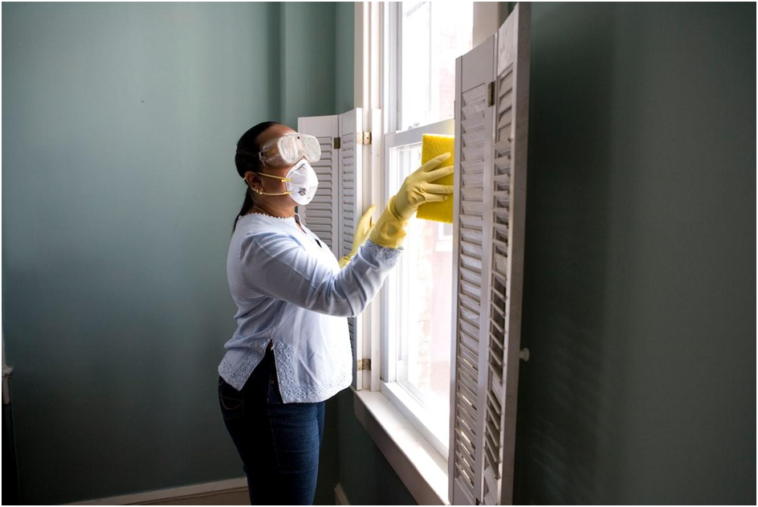As a homeowner, keeping your home pest-free is essential to maintaining your property value and improving the quality of life for you and your family. Unfortunately, unwelcome critters such as ants, roaches, mice, and even ticks can find their way into our homes without us ever knowing until it’s too late!
To help stop an infestation from occurring in the first place – or at least minimize damage if one should occur – we have developed The Ultimate Pest Prevention Checklist for Homeowners that outlines all of the necessary steps required to keep pests away.
In this blog post, we will look at some helpful tips on how to detect early signs of an infestation as well as preventative actions you can take before an issue arises. Taking preventive measures now can save you time and money down the road so let’s dive in!

Seal Cracks and Crevices
One of the most effective ways to stop pests from entering your home is by sealing off any cracks or crevices that may be providing an entryway. Make sure to check all windows, doors, and vents for signs of holes or gaps and seal them with weatherproof caulking, mesh screens, or a similar material.
Also, be sure to inspect the exterior of your home for holes or openings that could provide a pathway for pests. The best way to exterminate pests is to prevent them from entering in the first place. Keep in mind, however, that some insects such as termites and carpenter ants can enter from underground, so it is important to have an inspection done by a licensed professional if you suspect an infestation.
Keep the Yard Mowed and Free From Debris
Mowing your lawn regularly and clearing away debris from the yard is another great way to prevent pests from entering your home. When grass gets overgrown, it provides a perfect hiding spot for many types of insects and animals. Keeping the grass cut short will make your yard less appealing to potential pest intruders.
Also, be sure to clear away leaves, twigs, and other debris that can provide an ideal habitat for insects. If you notice piles of mulch or compost near your home’s foundation, make sure to remove them as these can be a breeding ground for pests such as fleas and ticks.
Clear Away Standing Water Near Your Home
Standing water near your home can be more than just an annoyance – it can be a breeding ground for pesky mosquitoes. These pests not only cause itchy bites but can also transmit diseases such as West Nile virus and Zika virus. To keep your family safe and comfortable, make sure to clear away any standing water near your home.
This can be as simple as tipping over a bucket or flowerpot after a rainstorm or regularly draining any bird baths or fountains. By taking these small steps, you can help eliminate the chance of mosquitoes multiplying and reduce the risk of potentially dangerous diseases.
Drain Any Clogged Gutters or Downspouts
Clogged gutters and downspouts can create standing water which, as mentioned before, can be a breeding ground for annoying and potentially dangerous pests. To ensure that your home is free of standing water, make sure to check the gutter system regularly and clear away any debris or blockages that may cause them to become clogged or backed up.
Additionally, if your downspouts are not draining properly, you may want to consider extending them several feet away from the home’s foundation. This can help ensure that water is being directed away from the home and not pooling around it which can lead to an infestation of pests.
Store Food Properly in Sealed Containers
Food left exposed or uncovered can attract a variety of pests to your home. To reduce the likelihood of an infestation, make sure to store all food items in sealed containers and keep them away from areas that could be accessed by rodents or insects.
Also, empty out garbage cans regularly and dispose of food waste properly. If you have compost piles, make sure to keep them away from the home’s exterior as these can be a magnet for pests.
Keep in mind, however, that no matter how hard you try to prevent pests from entering your home, there’s always a chance of an infestation occurring. If you do notice any signs of a pest problem such as droppings or nests, it is best to contact a licensed exterminator right away in order to avoid further damage.

Taking the time to implement these preventative measures can save you a great deal of trouble in the future. While it does require some effort to seal cracks, maintain your yard, clear standing water, clean gutters, and store food properly, these actions are crucial in ensuring a pest-free environment in your home.
Remember, prevention is always better than cure, and these simple strategies can effectively reduce the risk of pest infestation. So, don’t delay – take a proactive approach to pest control and safeguard your home, health, and peace of mind today!





